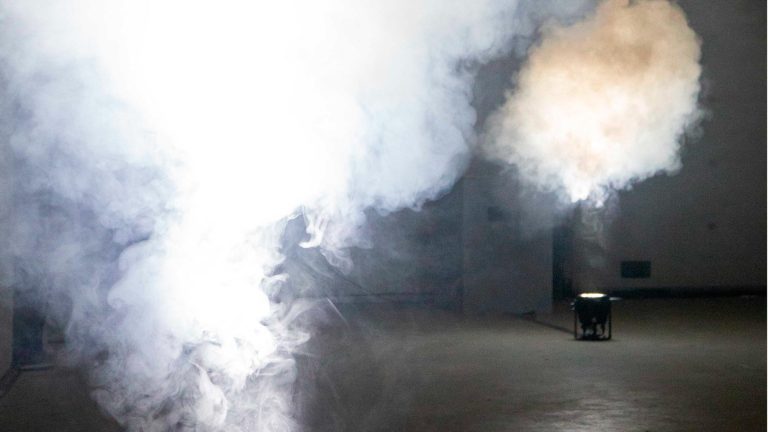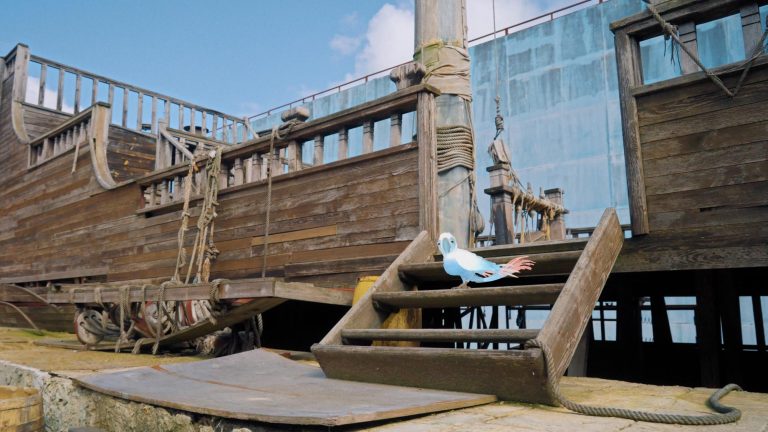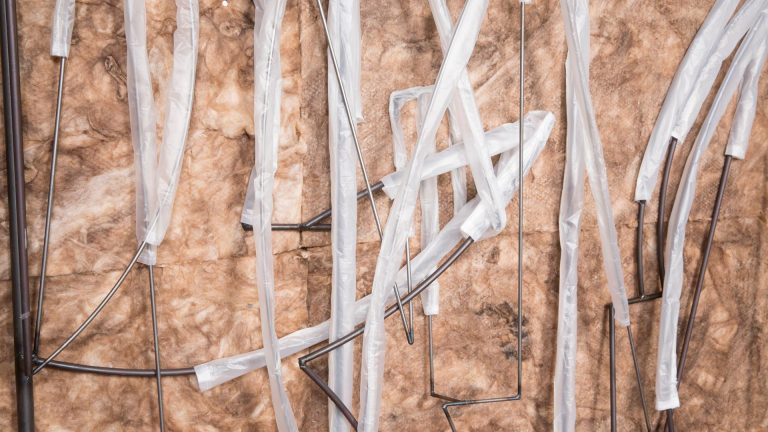Dürst Britt & Mayhew is pleased to present ‘Seven Decades’, Jacqueline de Jong’s fourth solo exhibition with the gallery, bringing together works from every decade since she started her artistic practice in the 1960s up until her final works. In the intervening decades De Jong experimented with a range of styles, from pop to realism, in her analysis of the socio-political events that shaped her lifetime. Motifs of eroticism, desire, violence and humour kept on recurring.
This exhibition coincides with ‘Vicious Circles’, De Jong’s first US retrospective of her work, at the NSU Art Museum Fort Lauderdale, Florida, which runs from 17 November 2024 until 4 May 2025.
De Jong began her career in Paris in 1961, the year in which she painted ‘Portrait de mon père’, quite a colourful work for this early period. Although a rather abstract composition, a phallic form – a motive that will keep on returning in her practice – is clearly recognisable. It was created during the period in which De Jong was part of the Situationist International, with whom she was active from 1960 to 1962, and befriended artists from Gruppe SPUR. Inspired by her avant-garde associations, De Jong was emboldened to disregard the prevalent post-war European artistic tradition in favour of a distinct and idiosyncratic style that encapsulated her revolutionary attitude to composition and characterisation.
Two examples from de Jong’s series of Accidental Paintings, begun in 1964, capture her dynamic and corporeal approach to both the personal and political. In ‘De L’Humour Belge’ (1965), a raucous expression of the sexual revolution that was taking over 1960s Paris, a naked red-haired lady pulls a cap over the face of a cyclist, while an empty car can be seen in the background. In ‘La guardia pisse pendant la collission’ (1965), a policeman can be seen peeing against a tree, while two cars are colliding. Another red-haired naked lady can be seen in the background (one could argue it to be a depiction of the artist herself).
De Jong unfailingly interrogated human brutality in her work. She was critically aware of the cruelty of our day to day lives, in which the news cycle plays on a constant loop. While the works of the 1960s were concerned with the savagery of the everyday, in the 1970s she developed an interest in sports (a more cultivated way of manifesting competition and aggression with a touch of eroticism). In the early 1980s she focused on murder scenes (Série Noire), while from the beginning of the 1990s De Jong started to look more closely at war, from the First World War through Libanon and the Gulf Crisis up until the ongoing conflicts in Ukraine and Gaza, which she explored in her final ‘Borderline’ series of paintings. In ‘Mariupol’ (2023) bodies are strewn over roads and rivers, flames are licking the upper edge of the canvas. Images of bikes and cars hark back to de Jong’s Accidental Paintings of the mid-1960s.The cadaverous inhabitants in de Jong’s paintings are a reminder of the ghosts of Europe’s war-stricken past, inciting the viewer to reckon with their own humanity as they process world events.
Jacqueline de Jong (1939-2024) lived and worked in Amsterdam, The Netherlands, and in Bourbonnais, France. Currently the NSU Art Museum Fort Lauderdale, FL, is presenting the first US retrospective of her work. Other recent solo museum exhibitions include The Ultimate Kiss, WIELS, Brussels (2021), touring to MOSTYN, Wales (2021-22) and Kunstmuseum Ravensburg, Germany (2022); Pinball Wizard: The Work and Life of Jacqueline de Jong, Stedelijk Museum, Amsterdam (2019); Jacqueline de Jong, Les Abattoirs, Toulouse (2018-19); Jacqueline de Jong & The Situationist Times, Malmö Konsthall (2018-19); and Jacqueline de Jong: Undercover in de kunst, Cobra Museum for Contemporary Art, Amstelveen (2003). Current and recent group exhibitions include Centre Pompidou, Paris (2024); Rijksmusem, Amsterdam (2024); Stedelijk Museum, Amsterdam (2022-23); Cobra Museum for Contemporary Art, Amstelveen (2023); BPS22 Musée d’art de la Province de Hainaut, Charleroi (2023); Musée d’Art Moderne de Paris (2022 and 2017); The Warehouse, Dallas (2021); Lenbachhaus, Munich (2020); Frans Hals Museum, Haarlem (2018); and Musée des Arts Décoratifs, Paris (2018).
In May 2023, de Jong was named Chevalier de l’Ordre des Arts et des Lettres by the French Ministry of Culture. In 2019 the AWARE Prize for Women Artists presented her with the Outstanding Merit Award in recognition of her exceptional career. That same year, These are Situationist Times! (Torpedo Press, Oslo), an in-depth history of the publication, was launched at Stedelijk Museum, Amsterdam, and MoMA PS1, New York, NY. Her archive, Jacqueline de Jong Papers, was acquired in 2011 by the Beinecke Library of Rare Books and Manuscripts, Yale University, New Haven, CT.
Both the Centre Pompidou in Paris and the San Francisco Museum of Modern Art acquired major 1960s works earlier this year. Other collections include Stedelijk Museum, Amsterdam; Moderna Museet, Stockholm; Le Centre national des arts plastiques (Cnap), Paris; Musée les Abattoirs, Toulouse; Amsterdam Museum; Cobra Museum for Modern Art, Amstelveen; Frans Hals Museum, Haarlem; Museum Arnhem; LAM, Lisse; Museum Jorn, Silkeborg; Henie Onstad Kunstsenter, Oslo; MONA, Tasmania; Elie Khouri Art Foundation, Dubai; Kunstmuseum Göteborg; Lenbachhaus, Munich; Rachofsky Collection, Dallas, TX; and Musée d’Art Moderne de Paris.































150 cm


(sheet)/58 × 77 cm (frame)












nepheline gel on canvas, 100 x 150 cm


on canvas, oil stick and nepheline gel, 90 × 62 cm

canvas, oil stick and nepheline gel







